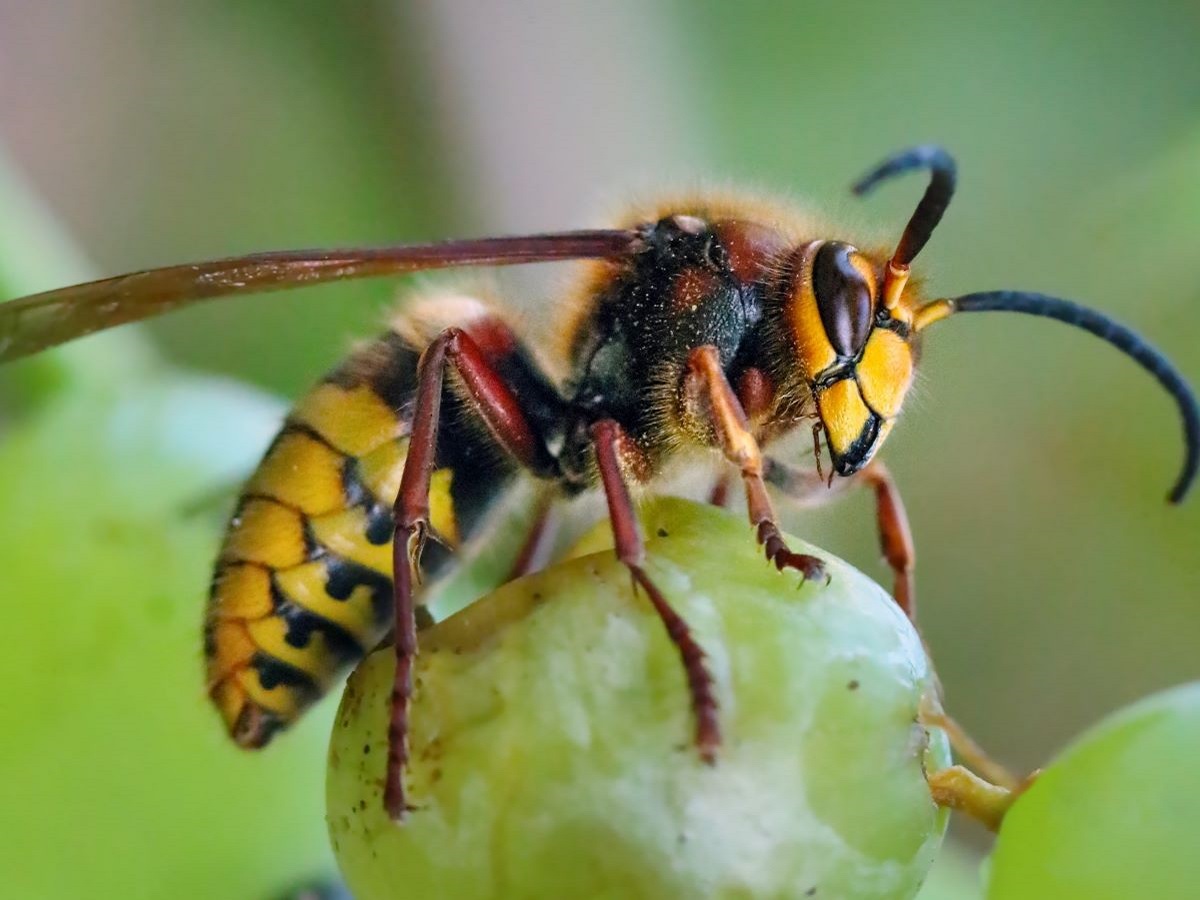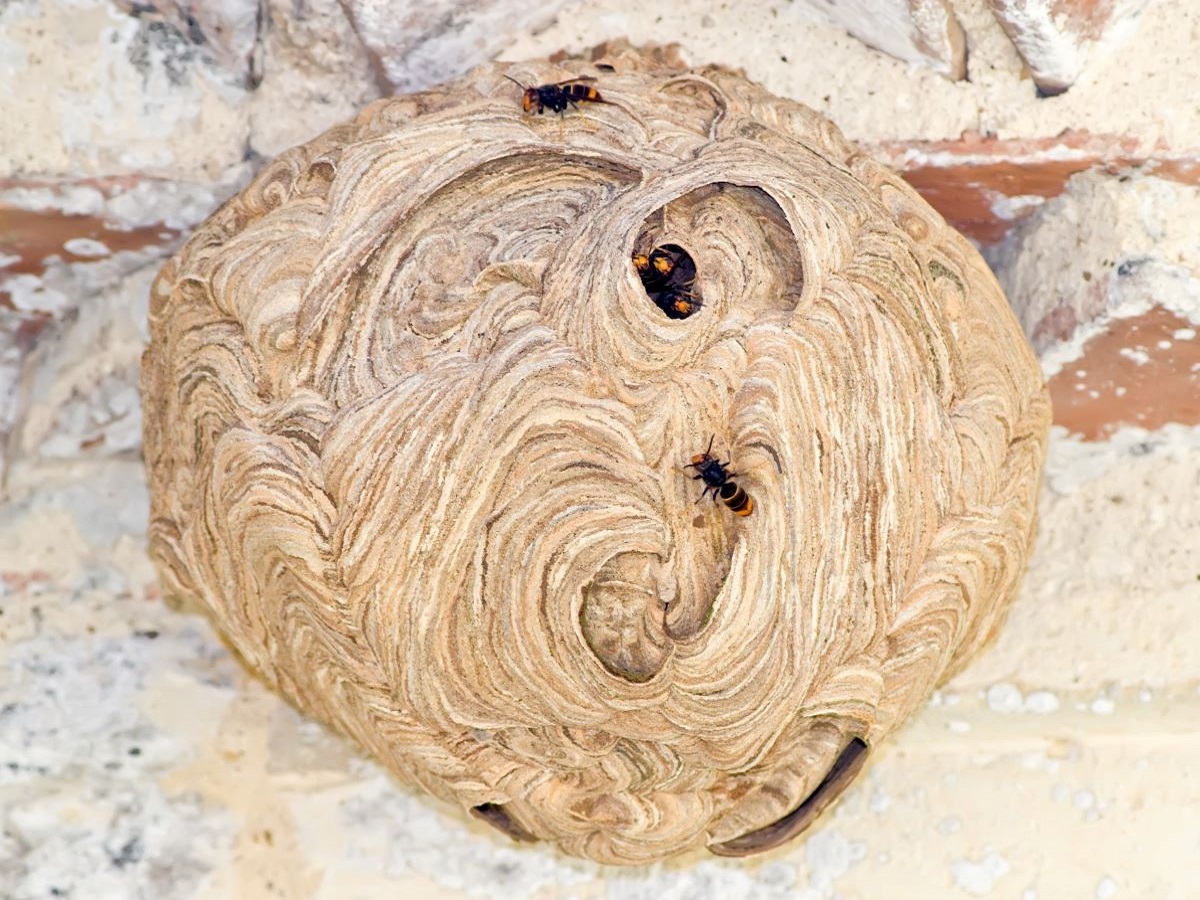Get Rid of Hornets
Prices from £90 +VAT
To get rid of hornets from your home or business premises call 0800 026 0308

Guarantee
We guarantee that a treated nest will never be used again and the actual location of the treated nest will not be reused by other hornets for the remainder of the calendar year.
Hornets are much bigger than wasps. If you have a nest you’ll see hornets, between May and November, entering and leaving a hole in the ground, wall, roof or any other part of a building. You may also see hornets inside your home, particularly when the days are shortening, as they are attracted to artificial light.
Hornets will sting readily if they think the nest is in danger but generally they are less aggressive than wasps. A hornet nest is a grey or beige structure made of a papier-mâché like material.
Why should a hornet nest be treated?
If you don’t treat a hornet nest it will eventually die out, but before this happens, the nest will produce fertile queens which will hibernate and start nests the following year.

Preparation you must undertake prior to treatment
- Don’t be tempted to block the entrance hole up as this will make the hornets angry and aggressive but it won’t kill the nest and they’ll find another entrance.
Aftercare
After treatment the nest will remain in a hyperactive state for up to 3-hours but usually hornet activity ceases much sooner.
- Keep people and pets away from the area until activity has ceased.
- Close windows and warn neighbours to keep away.
- Hornet activity can remain for up to 2-weeks in the summer and up to 20-days in autumn after the treatment.
A hornet nest is made of a substance similar to papier-mâché which will not rot or smell, so it’s quite safe and hygienic to leave where it is. However if it is accessible and you wish to remove it you must wait for at least 4-weeks after treatment to ensure that no one gets stung by any hornets that have hatched after the queen has died. Also, if you remove the nest immediately the hornets which were out foraging would find no nest on their return so attempt to rebuild it.

How our treatment works
The entrance to the nest or the nest itself will be treated with an appropriate insecticide.
Products we use
The technician will state which insecticide has been used on the report they give you after they have completed the treatment. Click each product to access its safety data sheet. All insecticides are biodegradable, almost odourless, non-tainting and don’t corrode or stain.
Insecticide sprays
Insecticide powder
Insecticide fogging
Facts about hornets
Over the past 10-years Pest UK has been seeing an ever increasing amount of hornets. There are more hornets in ‘poor’ wasp years, these are years that for whatever reasons the number of wasp nests have been low. It may be that they prefer different conditions but must probably is that they are competing for the same foods and living spaces. Although much larger than wasps, and individually a wasp is no match for a hornet, a hornet nest contains only several hundred whereas a wasp nest may contain several thousand. The life cycle of both wasps and hornets are nearly identical. Although hornet nests can contain several hundred hornets in reality it may be much less. I have found nests in late Summer that only had about 10 hornets in. I believe that if the nest struggles they may act as do some Bumble Bee species in the arctic, they either don’t produce workers but go straight on to produce queens and drones or produce fewer workers before producing the queens and drones.
Hornets are a nuisance in the Autumn. The reason for this is light. Although this is also apparent with wasps it seems more so with hornets that they are attracted to artificial light, especially when the days start drawing in. Often the first indication a house holder will have of a hornets nest is when they find them buzzing around lights. Locating a hornets nest can be difficult if the number of hornets in the nest is small. A nest with a low number in will produce a lot less ‘traffic’ (the movement of hornets into & leaving the nest). Looking at traffic of a wasp or hornets nest may be the only way to locate a nest if the nest cannot be seen, if it was built in a place like in a cavity wall or boxed off area.
The lifecycle of hornets is the same as wasps. Queens emerge from hibernation in the Spring and construct a nest. Eggs are laid in the special constructed cells which hatch into grubs. These are fed a high protein diet of insects and grubs. The first batch to pupate and turn into adults are workers which are sterilised females. These workers take over the running of the nest. Mid to late Summer the Queen lays the last batch of eggs which are fed a diet that allows them to be the sexual forms of the species, Queens and Drones. These mate with Queens and Drones from other nests, the original Queen, workers and Drones die off by the Winter and the new Queens hibernate and the cycle continues.
